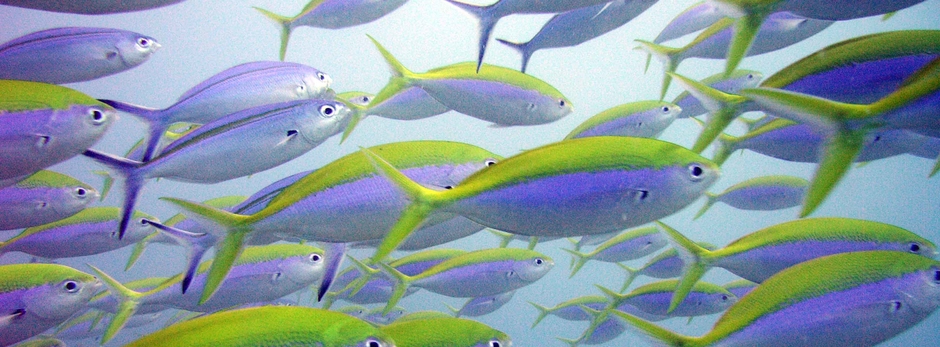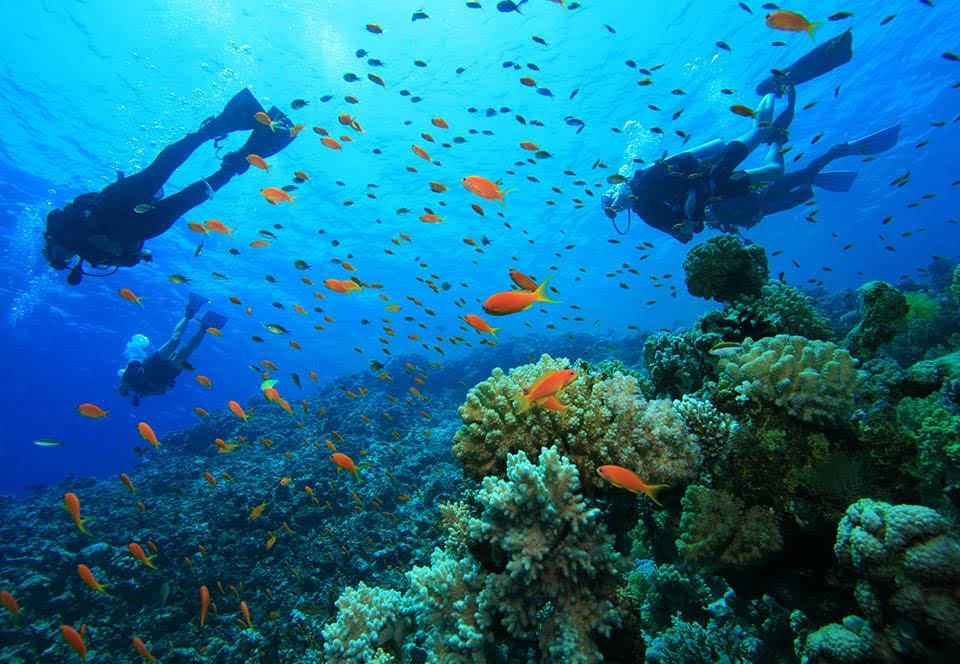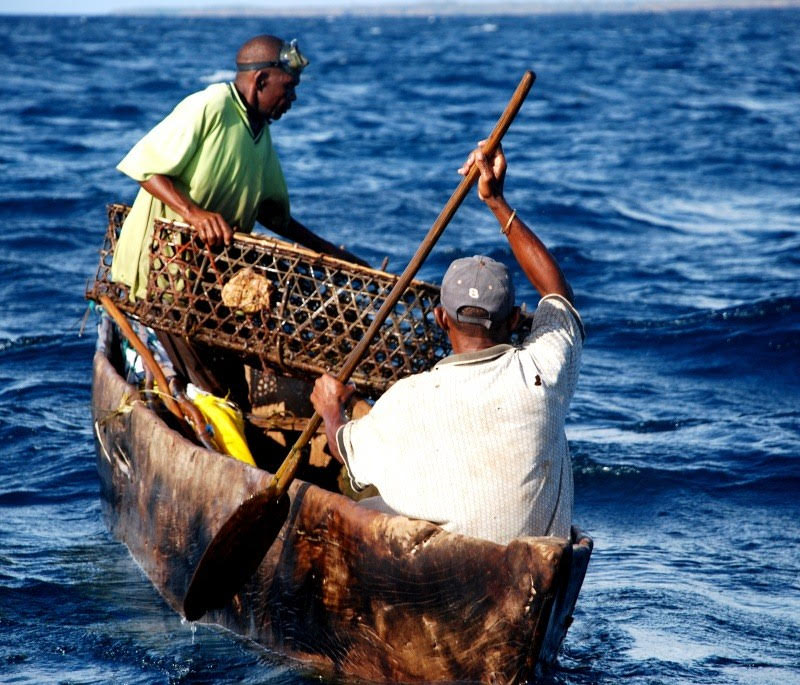The Marine Protected Areas of Kenya Part II
By Fatma Hassan
Kenya has the oldest managed Marine Protected Area (MPA) in
Africa! Throughout Kenya, there are four Marine National Parks, Malindi, Watamu, Mombasa, and Kisite, in a total area of 55 km2, and six
Marine National Reserves, Kiunga, Malindi,
Watamu, Mombasa, Diani-Chale,
and Mpunguti, totaling an area of 735 km˛. Marine
National Parks are adjacent to or encompassed within Marine Reserves, for
example the Watamu-Malindi Marine National Park and
Reserve, the first MPA to be established in Kenya. Even though the Diani–Chale Marine National Reserve is the most recent reserve, gazetted in 1994, there is no official active management.
Having dived in the most pristine reefs and the most degraded reefs in Diani, I
have found myself often dreaming of the day Diani-Chale
Marine National Reserve would be actively managed!
Let’s take a closer look at some of these
parks and reserves!

Watamu-Malindi Marine National Park and Reserve,
image by UNESCO
Malindi-Watamu Biosphere reserve-©Olivier Hamerlynck
Watamu-Malindi
Marine National Park and Reserve (WMMNPR)
The oldest MPA in Africa is Watamu
Marine National Park (WMNP) established in 1968. The park exists within the
larger Watamu-Malindi Marine National Reserve. It is
one of two no-take zones nested within the larger Watamu-Malindi
Marine National Reserve, which is 245km˛. This is probably a very small MPA
compared to some of the world’s largest protected MPAs. Now if you recall Part 1 of this article where I rave
about Vivienne Evans’ article on coral restoration, she quotes, “most
restoration projects are technically compared to the size of a backyard.” For MPAs,
there is room for protecting much bigger areas. For instance, large scale MPAs
can cover an area of 150,000 km2 of the ocean. If coral reefs are to be saved in a global scale, establishing larger
and effective MPAs seems a more advanced way to safeguard both the reefs and
their inhabitants.
MPAs are some of the last places where marine species can escape to. They also support healthy fisheries and increase the ability of coral reefs to resist bleaching. This is why most MPAs have got a healthy population of fish making it a much more enjoyable diving or snorkeling experience. Also, a reef with a healthy population of fish, especially herbivorous fish, will increase recruitment of coral compared to a degraded reef with less herbivorous fish that will be dominated by algae. Extraction of all resources, including fishing, is prohibited within the park, but within the reserve, traditional and sustainable fishing and extraction activities such as sustainable removal of shells are permitted. This benefits both the marine life populations, and the local fishing communities.

Watamu-Malindi Marine National Park and Reserve, image by
Natural World Kenya Safaris
The park consists of 10km˛ of shallow lagoon containing coral,
seagrass and sand. The WMMNPR also encompasses the Mida
creek mangrove forest. This mangrove forest hosts the widest range of mangrove
species on the entire East African coast. It is rich in fish, crabs, prawns,
and oysters, which also support local fishing communities.
Historically,
WMMNPR has been an international tourism centre.
Tourism, although economically important, also has a negative side. Corals and
shells have been exploited heavily by visitors and local tradesmen as souvenirs
for many years. Both trampling and anchorage have also caused disturbances on
the reef. However, there are many local
conservation organisations in the area working hard
to protect the marine life, this includes our partners at Local Ocean
Conservation.
Kisite-Mpunguti Marine National Park and Reserve (KMMNPR)
I myself
have had the opportunity to dive in only one of the MPAs in Kenya, which is
the Kisite Marine National Park. This particular
MPA is located off the south coast of Kenya. It is considered to be the
most magnificent of the Kenyan MPAs and I couldn’t agree more! It was established in
1973. Following local disputes over the
loss of fishing grounds caused by the
establishment of the strict Marine National
Park, Mpunguti was gazetted
as a Marine National Reserve five years
later. The KMPNPR includes
three coral ragged islands partially covered
by dense equatorial rain forest or low grasses, as well as
submerged reefs, and they sit adjacent to a mangrove forest on the
mainland. The reef is very healthy, with
more than 250
species described within the park so far.
Several reef restoration
projects have been established in the islands which have shown an increase in
fish populations three times as much as compared to
other areas, but even so, the park still stands exuberant and full of
life compared to the areas with restoration projects. In protection of reefs, it is much easier to plant corals instead of
creating MPAs or managing fisheries, which takes years to see any real
progress, but the end result of a MPA will far outmatch restoration!
Kiunga Marine National Reserve
Further north, in the famous cultural county of Lamu, you can find the Kiunga Marine
National Reserve which incorporates a chain of about 50 offshore islands and
coral reefs in the Lamu Archipelago, running for some
60 km parallel to the coastline. The protected status of the reserve ensures
the conservation of many critical ecosystems both on land and in the water.
The marine reserve includes an indented coastline
and dozens of islands with splendid coral reefs, seagrass beds, sandy beaches
and dunes, and rich mangroves. It’s a feeding ground of at least five species
of sea turtles, three of which nest in the reserve. Other than tourism, the
major economic activity in the region is artisanal fishing. Kiunga
is the main fishing village near the Somali border and the region is known to
harbor the best fishermen on the coast. Among the challenges faced by the
artisanal fishermen is the decrease in catch over the years due to overfishing.

Coral reef fisheries in Kenya, image by CORDIO East Africa
The livelihoods of thousands of coastal
communities are dependent on the fisheries resources. The region receives a lot
of funds for various projects, from turtle conservation, to fisheries in order
to protect the uniqueness of the coastal habitat and its resources for future
generations. However, if it were to protect its reefs with a marine park rather
than just a reserve, it is much more likely
to result in productive fishing grounds and greater tourism.
If only
MPAs could receive as much publicity as restoration projects are currently and
if only governments could work closely with communities in establishing more
effective MPAs!
Cowburn, B., Musembi,
P. M., Sindorf, V., Kohlmeier, D., Raker, C., Nussbaumer, A., ... & Horions, M. (2018). The Habitats and Biodiversity of Watamu Marine National Park: Evaluating Our Knowledge of One
of East Africa's Oldest Marine Protected Areas. Atoll Research Bulletin, (618).
https://www.theguardian.com/environment/2019/nov/26/lobsters-and-octopuses-are-back-kenyan-women-leading-coral-reef-revival-wasini-island